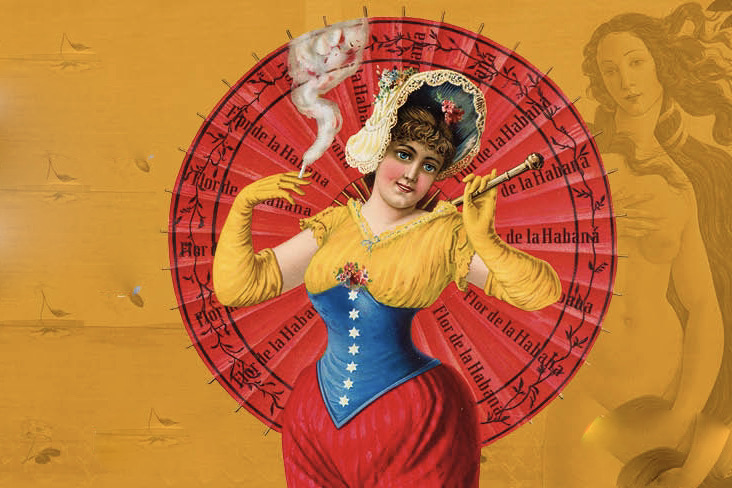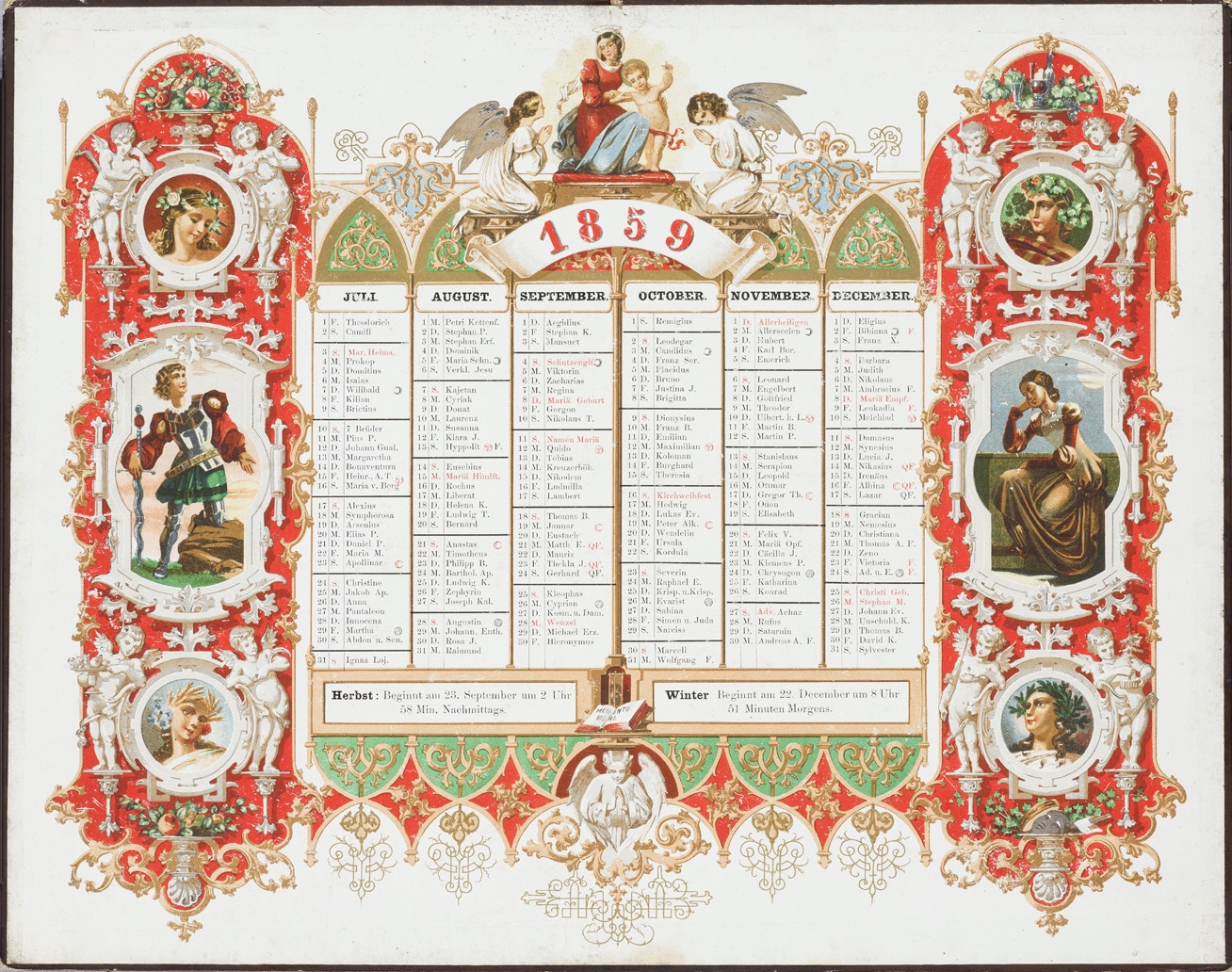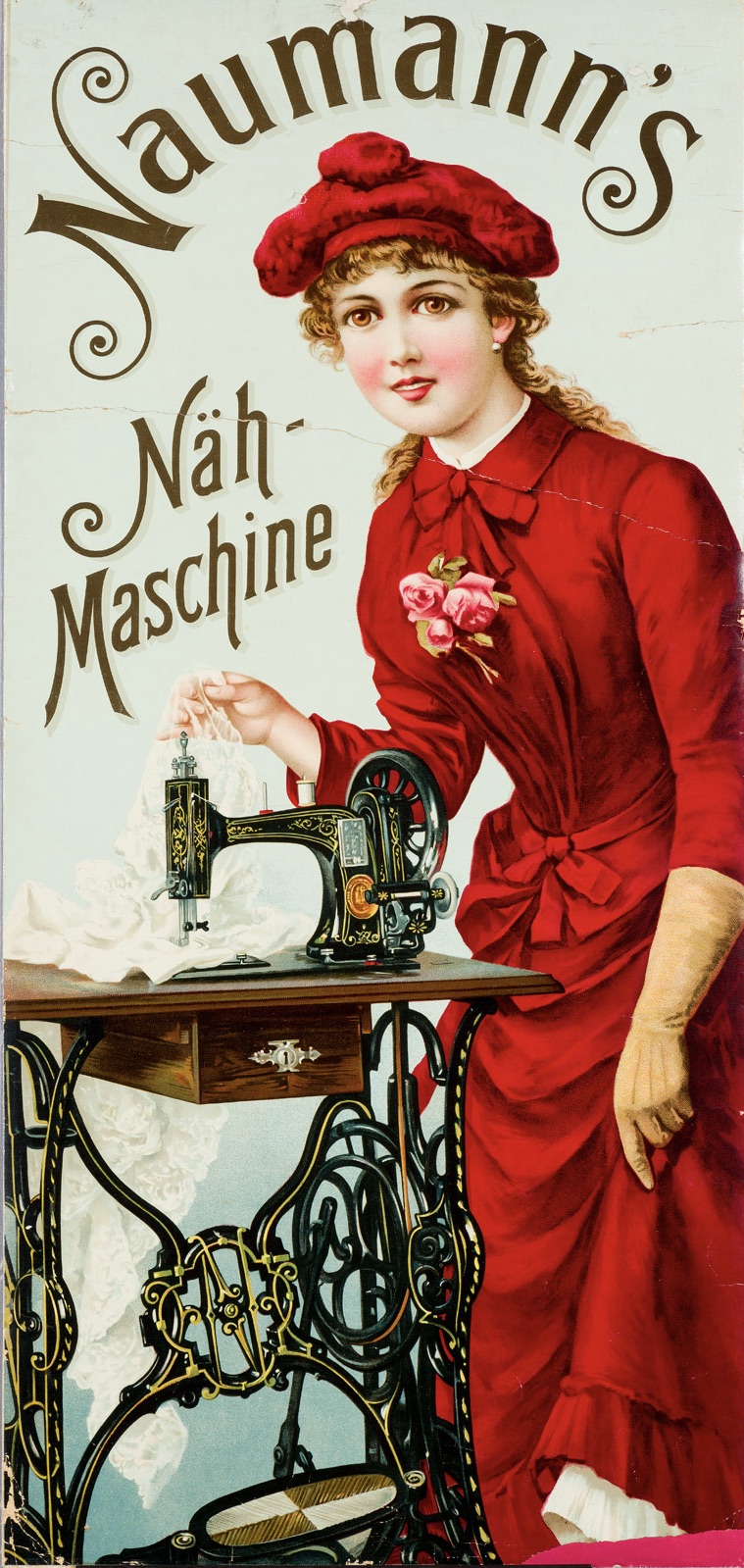17.12.2020–05.09.2021

Curator: Lucie Vlčková
Architecture design Tomáš Džadoň
Graphic design: Vladimír Vimr
At the height of its fame – in the second half of the 19th century – chromolithography was an exclusive, sophisticated technique of multi-color registration, using the principle of color addition and the optical effect of the dot. The distribution of the image into a small grid, allowing for smooth coloring transitions and soft modeling, predetermined how chromolithographic prints expressed their content, an expression characterized by the concept of the illusive and by their own special visual language.
During its development, the role of chromolithography changed from a reproduction technology with the ambition to look as much as possible like painting, to its use as an independent medium in advertising, to a purely service function, both in exact scientific illustrations and in the “cheap and cheerful” commercial multi-color prints due to which chromolitography, then called “chromo”, got its bad reputation. Because of this aspect, for a long time art historical disciplines unjustifiably downgraded the exceptional works created through this extremely demanding technique, in particular advertising posters, diplomas and calendars. Chromolithography became a focus of research attention since the 1970s in connection with the paradigm shift in the classical hierarchization of high and low art, as well as thanks to the expansion of interdisciplinary visual culture studies appreciating artistically marginal,non-canonical manifestations, including advertising. At the same time, however, there is a growing interest in the issue of commercialization and also in the democratization of art, which is directly connected with chromolithography, as it was initially a technique for reproducing paintings. Chromolithography made it possible to disseminate unique works of art to a much wider audience, unlimited by social, educational or other disadvantages, and led to questions being raised about the value of the original and the devaluation of art in general.
The exhibition will show chromolithography in the full range of its manifestations, using examples of the best prints by the important lithographers and lithographic institutes that were operating in the Czech lands, such as Habel, Haase, Fuchs and Pick, as well as works from abroad. It will also provide a closer look at the technical issues and skills necessary for deploying this method. Reproductions of paintings, print advertisements, calendars, diplomas, educational and scientific illustrations, sacred images and small commercial prints will be presented. The exhibition is dominated by a large set of early pictorial posters that are a key material documenting the changes of styles and aesthetic preferences, as well as a valuable historical source of information about the drastic changes in 19th-century society with respect to aspects of lifestyle, the birth of a consumer society, and shifts in the traditional gender hierarchy.
The exhibition has been realized within the project NAKI II (Ministry of Culture of the Czech Republic) No. DG18P02OVV011 entitled “The Poster as a Tool of Communication and Cultural-Historical Source: Visual Medium of Changes of National Cultural Identity in the Years 1880–1938, Procedures for its Protection, Preservation and Accessibility”.
The Museum of Decorative Arts – main building
17. listopadu 2
110 00 Prague 1
Opening Hours
Tuesday 10 a.m.–8 p.m.
Wednesday – Sunday 10 a.m.–6 p.m.
Monday closed
Addmission for all branches
full CZK 150 | concession CZK 80

